
Only BB ≥ 2016:

Inhaltsverzeichnis
Build Report IJN P-106 ex Dutch Banckert
Background
I was fascinated by the story of the Netherlands destroyer Banckert. My plan was to make a model in the design as japanese escort P-106. I had in mind the option to
design it such that a small series kit can be made. Let's see...
Story
In February 1942 the Banckert fought together with the van Ghent against the Japanese invasion in Palembang. End of February, she was so badly damaged that it was abandoned 2.3.42. For this purpose, they were fired from the submarine K-XVIII with the onboard gun. The Japanese raised and rebuilt it as patrol boat 106. (P-106 or PB-106 is just a Western designation) However, it was not completely finished. After the war the Dutch Navy sunk it as a target ship.
How did it look like?
Typical start of a project: Investigation. This showed that the status at the end of WW2 is not really clear. There is one known original picture as PB-106:
http://en.wikipedia.org/wiki/File:IJN_PB106-1946.jpg

There are drawings:
http://shipbucket.com/images.php?dir=Real
Designs/Japan/DD Patrol boat 106.png
http://www.navypedia.org/ships/japan/jap_esc_banckert.htm
According to HP Models a sketch was published in a publication in the '70s who mentions the P-106 as a carrier of two landing craft. They also have 12 x 2.5cm Flak worn (probably 4x3). This coincides with the technical specifications in
http://www.navypedia.org/ships/japan/jap_esc_banckert.htm
.
http://propnturret.com/tully/viewtopic.php?f=2&t=422
contains some valuable information, in particular:
There is a sketch of PB106 in Shizuo Fukui's book "Japanese Naval Vessels at the end of World War II" (on page 48), with the following comments:
There is a
sketch of PB106 in Shizuo Fukui's book "Japanese Naval Vessels
at the end of World War II" (on page 48), with the following
comments:
"She is ex Dutch destroyer Banckert (Yarrow
design). Built by Burgebhouts in 1930. Originally she carried 4 x
12cm guns, 1 x 8cm H.A, several machine guns and 2 x 53cm triple T.T.
She was sunk at Soerabaya in March, '42, salvaged & refitted by
Japanese Navy but not completed. Projected to be used for patroling,
escorting & transporting. 2 x 14m Daihatsu are to be carried on
deck. Speed reduced to about 26 knots. Her fittings armaments are not
mounted. Only engines repaired. She was moored without commision at
Soerabaya at the end of war." (Spelling as per
original)
Curiously, Fukui lists her as having four boilers, when
she was built with three. Projected armament was two 8cm H.A. guns,
four triple 25mm MG and 24 DC. According to the sketch ("this
sketch is shown presumptively"), one 8cm was to be mounted in
original "A" 12cm position, the second in the original
Dutch 7.5cm HA position between the funnels. The triple 25mm mounts
were to be mounted to port and starboard, two immediately ahead of a
Japanese style bridge, the other two to port and starboard of the
original forward torpedo tube mount position. DC racks and throwers
aft. Daihatsus stored at level of original aft torpedo tube mounts.
Tripod foremast immediately aft of bridge, original deckhouses aft of
funnels removed. Tripod mainmast between aft 25mm AA mounts and
Daihatsus.
From this information, in conjunction with the known picture, I come to the following conclusions:
- Dutch armament removed. Instead, planned 2 * 8cm, 4 * 3 * 2.5cm AA, 24 DC, 2 * 14m Daihatsu landing craft. Positions as described above: 8 cm in front of the bridge, 8 cm behind the front funnel. The triple AA aside and in front of the bridge. Further triple AA on the sides of the former forward torpedo mounts. DC at the stern.
- Slow down: This is usually done to save room for increased bunkers capacity for increased range. While the restoration at least the rear was removed, possibly even both. It is plausible that was not planned to take the rear boiler back into operation. Accordingly, I start from only one funnel.
- The photo also shows the Dutch bridge. It makes no sense to maintain that in this phase, in order then to replace it later.
- The position of the Daihatsu typically was at a ramp at the stern. However, a position as shown in the drawing can not be excluded. For this a strong crane is required. In any case, the rear deck houses are completely eliminated. Overall, removing the aft funnel allows to move the crane position forward to obtain enough room for the Daihatsu - plausible also in conjunction with the depth charges at the stern.
- As foremast a typical Japanese tripod mast of this time is to be provided. I see no reason to doubt Alvana's radar positioning.
Overall, this results in the new interpretation:

Building the model
As a kit I used the 1/700 scale Resin kit Banckert by HP Models. A very nice kit! I always used a 1/700 print aside.
The structures behind the rear mast were removed.
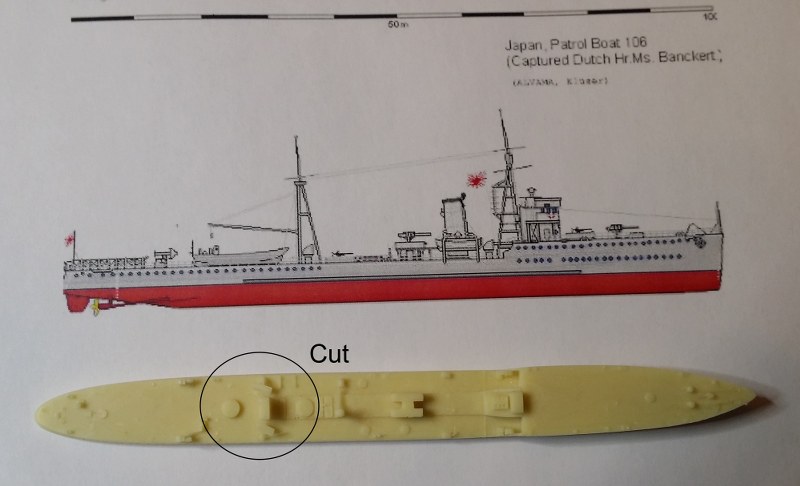

Bridge of the HP kit, forward funnel and middle gun platform were mounted.

Gun platforms on Japanese destroyers and Escorts typically were supported on their sides. These things I have modeled by fitting cut metal strip. Of course spares parts can be used, too - or even strips of paper.
The headlights platform is shown neither on the drawing origin, nor do they correspond in shape to Japanese customs. I have omitted them therefore. Small refinements like ladders from etched parts to be added in due course.
Then the two Japanese 8 cm guns were mounted. Just as some of the following parts can be taken from the quite cheap Japanese destroyers or escort ships kits. I prefer Pitroad kits (partly with the inscription Skywave). In these a standard sprue is often settled on which are all standard small parts such as guns, boats, or even the famous 2.5cm triple AA. This casting sprues are also sold separately. Instead Pitroad also an older Fujimi kit or the like can be used, of course the quality then might be very different.
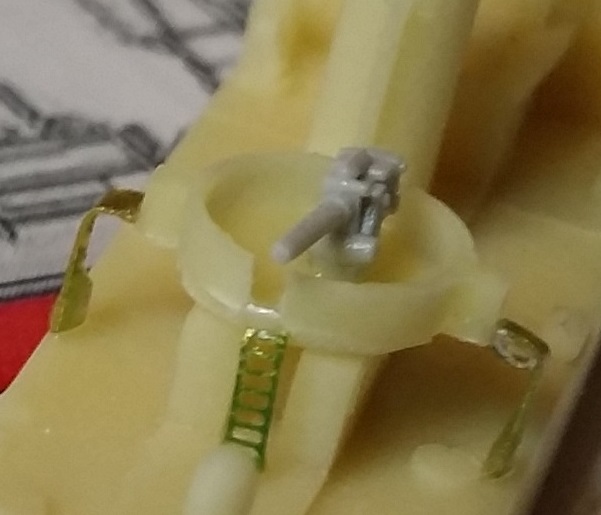

The exact shape of the AA platforms is not known. I therefore took such platforms of a Japanese destroyer. The exact location can be seen in the sketch.
The Banckert was damaged by gunfire and was tilted and capsized along with its dock. It is therefore impossible that the dinghies have survived this without damage. Certainly new boats of Japanese design were planned. Accordingly, the two come from a small parts sprue of Pitroad. The davits are from the HP Banckert Kit. They fit well. However, there was a small mistake in my drawing, the davits should be oriented outward.
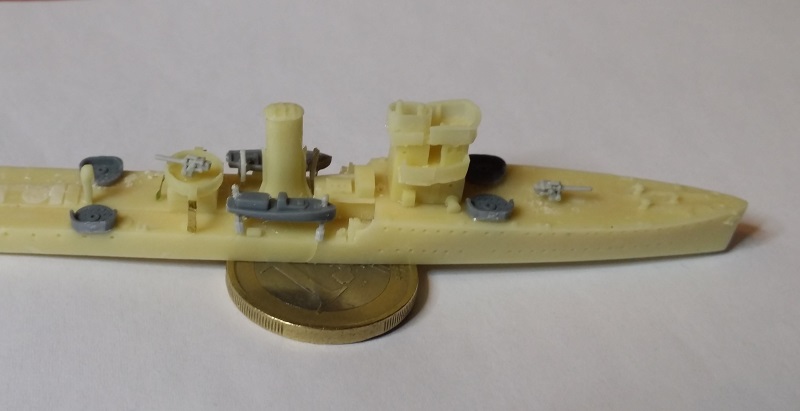
Triple AA and foremast.
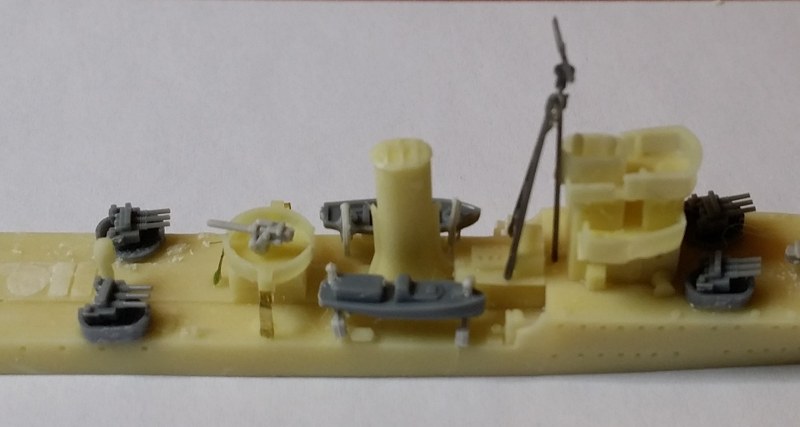
Now the Daihatsu were mounted. This helps in finding the right place for the small parts in the aft area. 14m Daihatsus can be found in different kits. I prefer the Tamiya Japanese Military Transport Set. It is of high quality, available and provides many further goodies.
Removing the depth charge throwers could already have been done in the first step above.
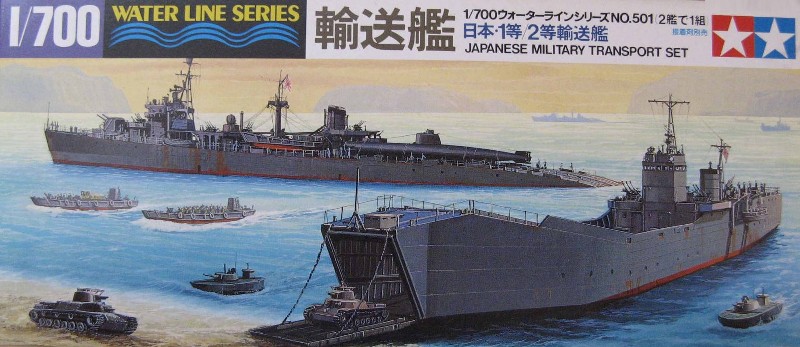
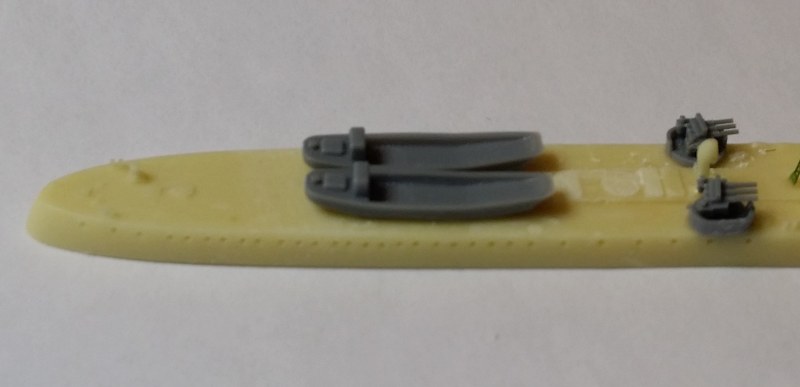
Comparison of the depth charge racks and throwers with the Hiburi.
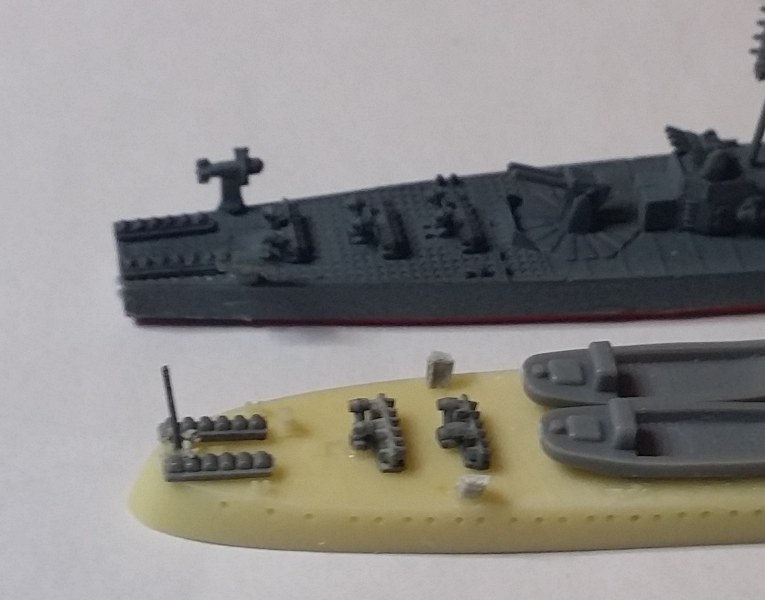
Preparation of the aft mast.
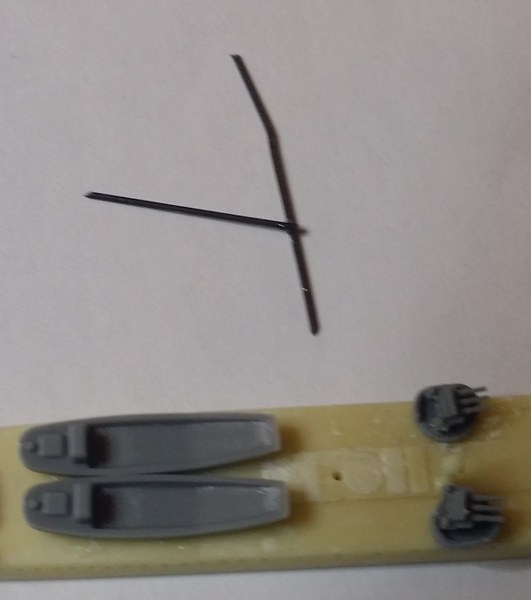
Completion of the masts. I've taken different wire strengths that I just go with a pair of pliers. With thin wires I roll the wire with a protractor on a smooth non-slip pad. The poles are wrong - this is intentional. Attachment of the radar: I'm a little gone higher than on the drawing. The eye of the derrick hawser is still to be bent.
Then already it's the time for some color. Japanese ships were almost entirely in a dark blue-gray. On destroyers also the deck was painted in that color. Sometimes there were also deck sections, which were covered with a linoleum whose color was kind of Orange / light brown. Boats were mostly covered with a plan. Start of war the color of the plan was white, later typically beige.

Handrails mounted and first pic shot. Several manufacturers offer hand rails in 1/700. I prefer the Saemann Ätztechnik. They are bit to high, but for me great in handling. As a glue for rails I use Gator Acrylic Glue.


The finished model
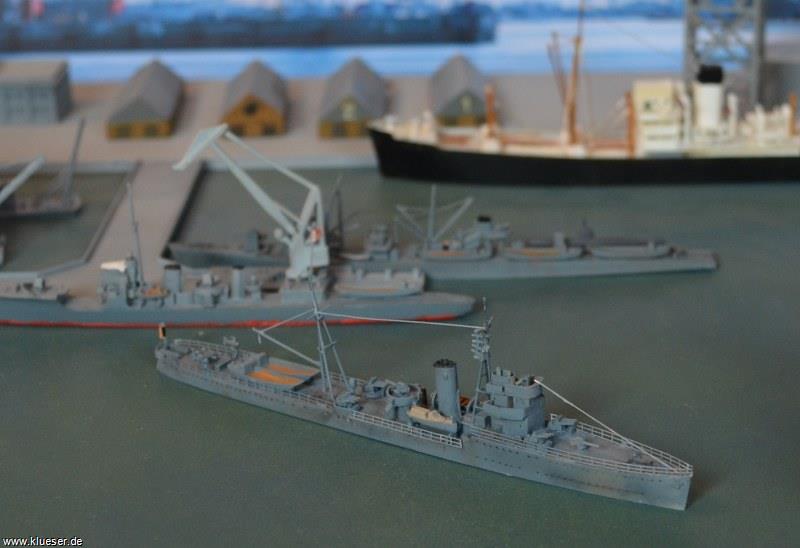

For more pics see the model entry P-106 ex Banckert.














